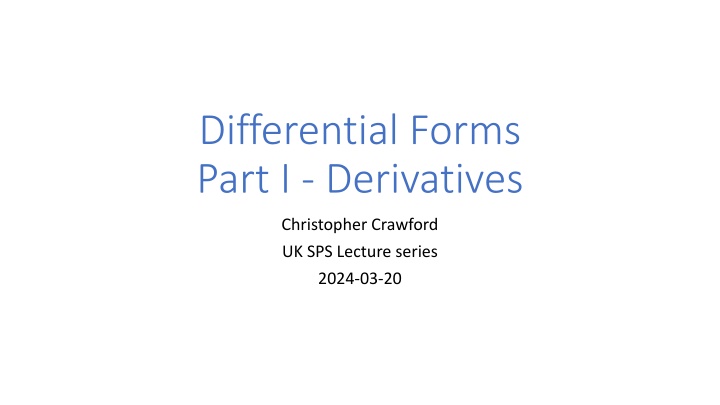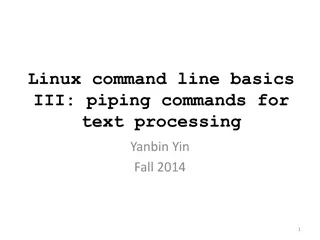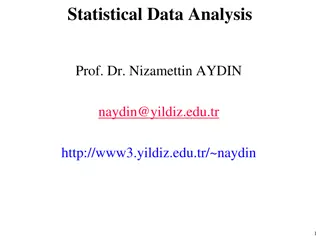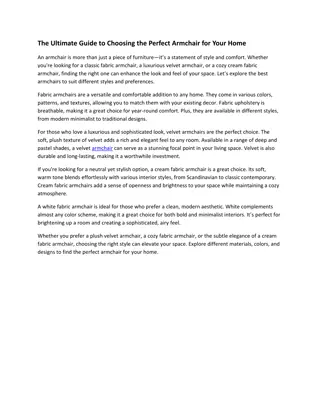
Understanding Differential Forms in the Physical Sciences
Explore the concept of differential forms and their applications in the physical sciences with insights on operators such as gradient, curl, and divergence. Discover the advantages of utilizing differential forms over tensors and delve into curvilinear coordinates and integration methods. Uncover the fundamental theorems of calculus and the chain rule in differential calculus.
Download Presentation

Please find below an Image/Link to download the presentation.
The content on the website is provided AS IS for your information and personal use only. It may not be sold, licensed, or shared on other websites without obtaining consent from the author. If you encounter any issues during the download, it is possible that the publisher has removed the file from their server.
You are allowed to download the files provided on this website for personal or commercial use, subject to the condition that they are used lawfully. All files are the property of their respective owners.
The content on the website is provided AS IS for your information and personal use only. It may not be sold, licensed, or shared on other websites without obtaining consent from the author.
E N D
Presentation Transcript
Differential Forms Part I - Derivatives Christopher Crawford UK SPS Lecture series 2024-03-20
What are differential forms? Harley Flanders, "Differential Forms with Applications to the Physical Sciences"
Main course: the Differential operator d Apply d to everything in sight!








